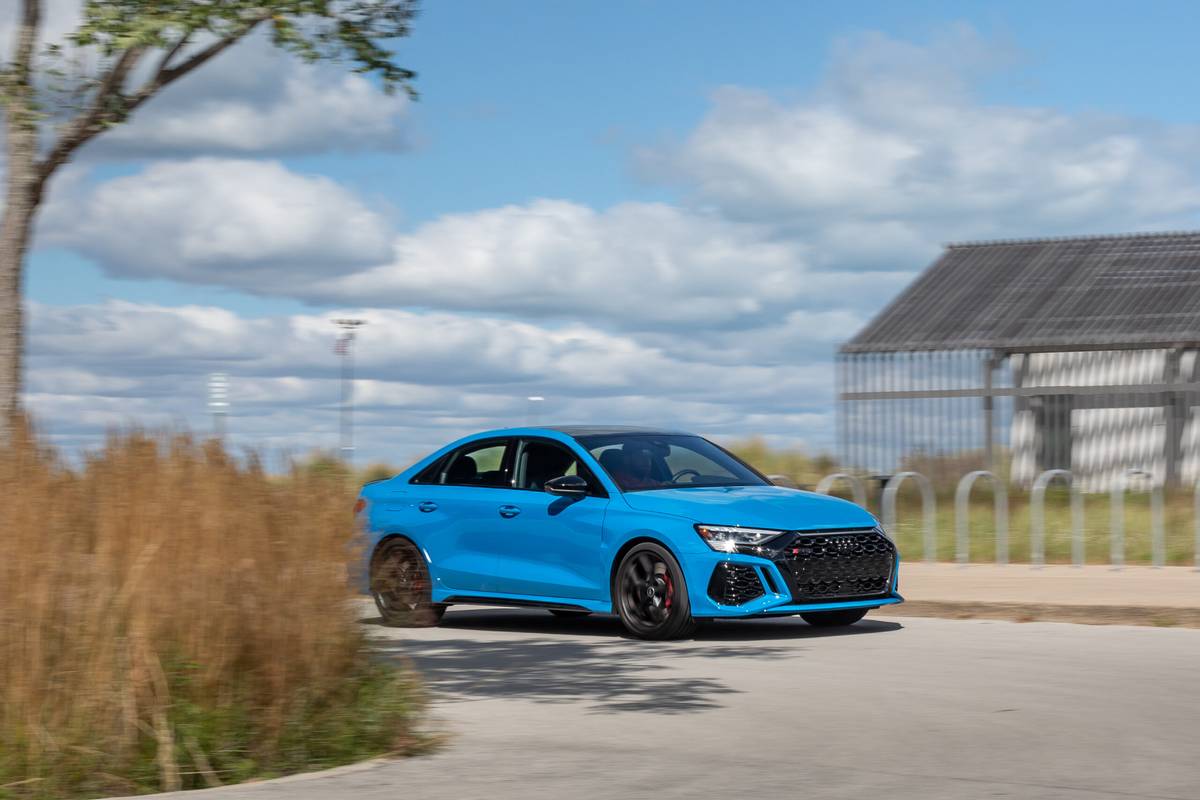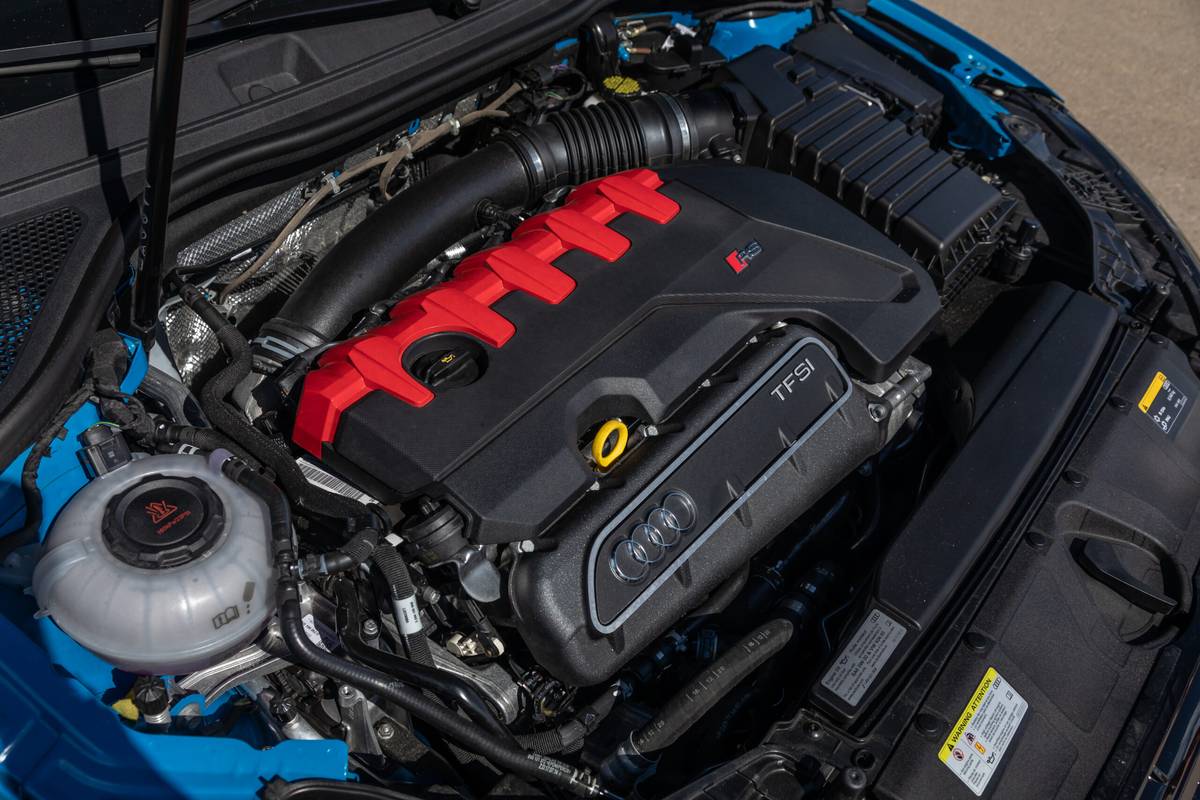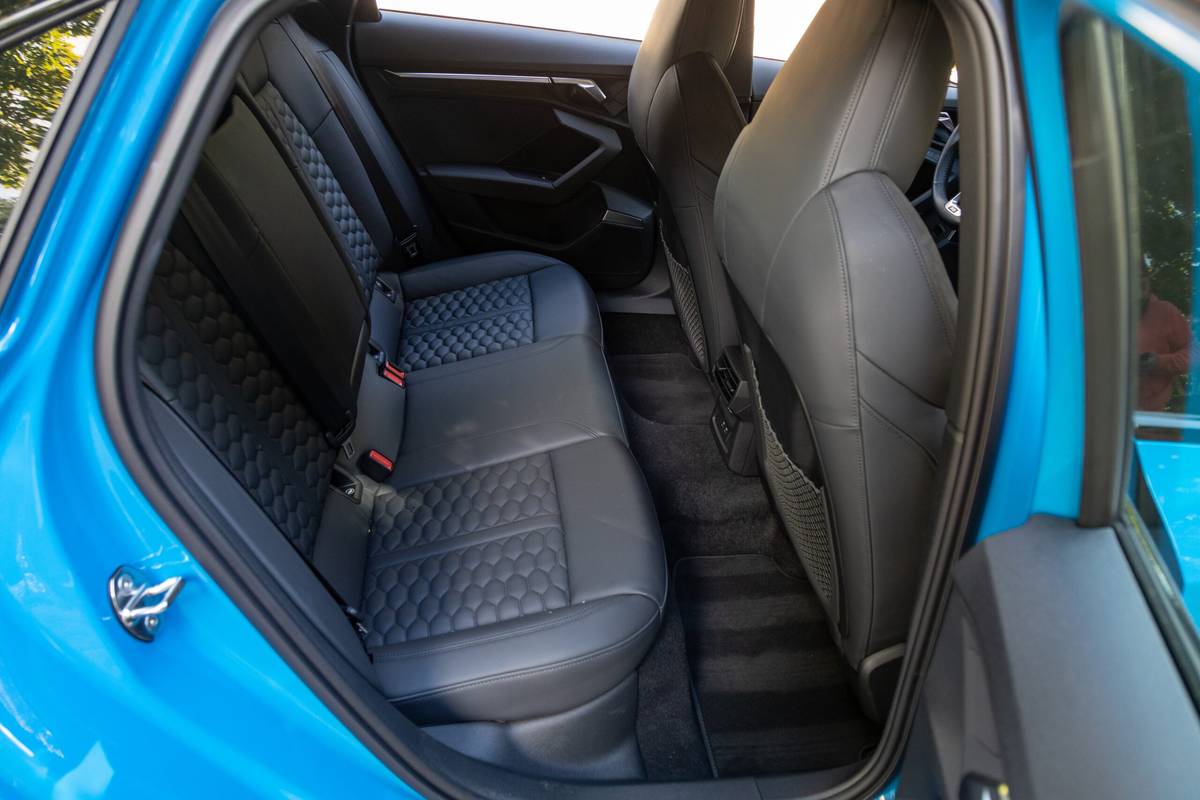Is the 2023 Audi RS 3 a Good Car? 4 Pros and 3 Cons

The Audi RS 3 is the smallest of Audi’s hottest RS performance models, packing razor-sharp handling, quick acceleration, and a businesslike yet upscale interior into a small but mighty package. Based on the subcompact A3 sedan, the RS 3 has kept its core appeal for 2023 after being redesigned for 2022 with a variety of notable improvements inside and out.
Related: 2023 Audi RS 3 Review: Just the Right Amount of Raucousness
Updates include a power boost to the turbocharged engine, along with a new all-wheel-drive system that enhances the RS 3’s handling and helps make it feel lighter on its feet. Interior changes include a new infotainment system, along with improvements to the control layout and a more modern and appealing look overall.
Cars.com’s Joe Bruzek recently had a chance to get well acquainted with the reinvented RS 3 and compare the new model to one from the previous generation. While he was generally impressed with its performance and improvements, he also found a few nits to pick. Click the link above to read Bruzek’s complete, expert review; for a quicker look at the high and low points, read on for four things we like about the 2023 Audi RS 3 and three things we don’t.
Things We Like

1. Heart-Healthy
At the heart of the RS 3 is a turbocharged 2.5-liter five-cylinder engine that got a slight power bump to 401 horsepower for 2022. Loud, raucous and quick, “refinement” is not a word that comes to mind to describe it — but the engine is a big part of what makes this car’s appeal. Power comes on quickly and in a rush, propelling the RS 3 from 0-60 mph in a claimed 3.6 seconds, accompanied by a grin-inducing soundtrack.
2. All-Wheel Fun
A new all-wheel-drive system has a few tricks up its sleeve to help hustle the RS 3 through corners, including a torque-splitting rear axle that sends additional power to the outside rear wheels for enhanced turning response. The rear end is able to step out under power in an easily controlled drift, resulting in cornering feel that’s more like a lightweight rear-drive coupe than an AWD sedan.
3. Inner Beauty
The interior has received a major upgrade both in terms of look and function. While not as luxurious as the nicely padded and richly furnished interiors of some upscale alternatives, the RS 3 benefits from decorative aluminized trim, as well as a vivid new 12.3-inch digital instrument cluster and center touchscreen with improved resolution and added capability. A mix of touch and physical controls are an improvement in both look and function, and they’re easy to use.
4. One of a Very Few
If you’re in the market for a track-ready small sedan that can double as a commuter car (or at least occasional family chariot), there aren’t a lot of alternatives in the RS 3’s size and price range. Starting at $61,995 (including destination), it doesn’t come cheap. But neither do its closest competitors from Mercedes-AMG or BMW, arguably neither of which serve up the same combination of uncompromising performance and daily driver usability.
More From Cars.com:
- 2023 Audi A3, S3, RS 3 Enter New Year With Minimal Updates, New Base Price
- Three Audi Vehicles Earn Top Safety Pick Plus Award
- 2022 Audi A3, S3 Review: Fast and Flawed
- 2017 Audi RS 3 Vs. 2018 Audi TT RS: Performance at a Price
- Find Your Next Car
Things We Don’t Like

1. Not So Sporty Exhaust
Our test car came equipped with a $1,000 sport exhaust, which was something of a disappointment. The pricey optional system sounded subdued, especially when compared to optional systems in other performance cars including the Chevrolet Corvette and Porsche 911. Buyers might want to save that $1,000 for track time or some other worthwhile cause.
2. Highway Handful
As rewarding as the RS 3 can be to drive in the twisties, keeping it going in a straight line on the highway proved to be less fun. Our test car tended to get pulled off course by road grooves and road imperfections, darting and weaving and requiring a lot of correction. Dropping the front tire pressure below the recommended minimum helped ease the twitchiness and mitigated the harshest impacts.
3. Cramped Quarters
It’s fair not to expect a cavernous cabin in a car this size, but buyers with a need for occupant space would be advised to proceed with caution. The rear seat can accommodate adults for occasional short trips, but families with small children will find car seats a tight fit that requires moving the front seats forward. The same might be necessary to keep grown rear-seat passengers from complaining. When the rear seats are empty, front seats are roomy enough all around.
Related Video:
Cars.com’s Editorial department is your source for automotive news and reviews. In line with Cars.com’s long-standing ethics policy, editors and reviewers don’t accept gifts or free trips from automakers. The Editorial department is independent of Cars.com’s advertising, sales and sponsored content departments.
Featured stories




